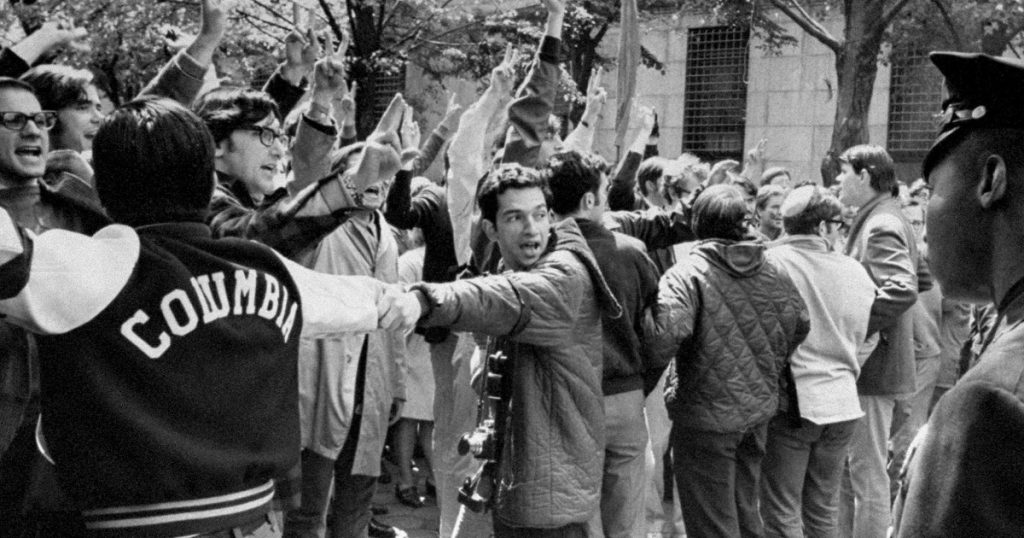Pro-Palestinian activists at Columbia University have recently demanded that the administration divest from corporations profiting from the war in Gaza and be more transparent about its investments. This comes in response to Israel’s declaration of war on Hamas militants in Gaza after a terror attack that killed more than 1,200 people. Israel’s military operations in Gaza have resulted in the deaths of over 33,000 people. The protests at Columbia have drawn parallels to past incidents of police crackdowns against demonstrators.
In a recent incident at Columbia University, the New York Police Department arrested over 100 people, including the daughter of Rep. Ilhan Omar, during pro-Palestinian protests. Columbia’s president defended the decision to involve law enforcement, citing protesters ignoring warnings to disperse and stop trespassing. This incident has sparked memories of a similar crackdown that occurred at Columbia 56 years ago, where police cleared five buildings that had been occupied, resulting in numerous arrests and injuries.
The 1968 building occupations and strikes at Columbia were characterized by violence and clashes with law enforcement, according to accounts from individuals involved in the protests. Buildings were barricaded, deans were held captive, and faculty members were injured in confrontations with police. The recent demonstrations at Columbia, while intense, have not reached the same level of violence as those in 1968. Experts in campus security hope that any future law enforcement response will be more carefully managed to avoid escalating tensions.
In response to the recent protests, a group called Columbia University Apartheid Divest warned against inciting violence on campus, referencing historical incidents like the killings of students at Kent State University and Jackson State College during anti-war and civil rights protests in 1970. They urged the university not to bring soldiers and armed police officers onto campus, fearing a potentially tragic outcome. The current protest movement at Columbia has been compared to past student movements in 1968, 1985, and 1992, highlighting the ongoing legacy of activism and dissent on campus.
The protests at Columbia this week have invigorated a new generation of activists, drawing inspiration from past movements against apartheid-era South Africa and other social justice causes. The occupation of Hamilton Hall in 1985 to demand divestment from companies involved in apartheid-era South Africa and a later demonstration against the conversion of a historical site into a biomedical research center are examples of past student actions at Columbia. The spirit of resistance and demand for accountability continues to resonate with students and protesters on campus.


